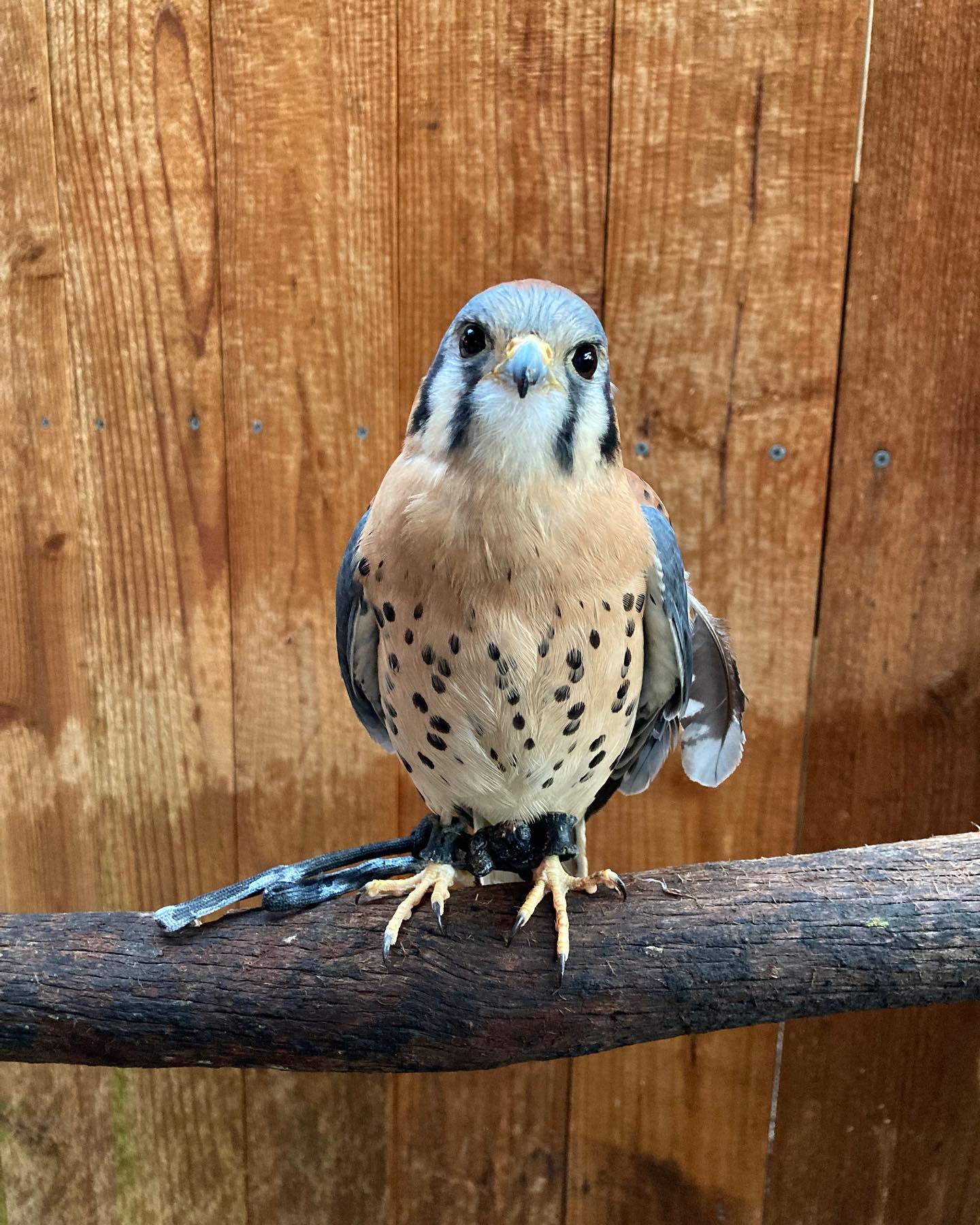Summary:
– Quimby, the American Kestrel, was found injured and unable to fly in 2020.
– He received care at the Lindsay Wildlife Experience and became part of the CuriOdyssey family.
– American Kestrels are skilled hunters and can hover for extended periods.
Happy Wildlife Wednesday! Today, we are delighted to introduce you to Quimby, an American Kestrel with an incredible story of resilience and survival. Quimby’s journey began in 2020 when he was found near a road suspected of being hit by a car. Thankfully, he was rescued and brought to the Lindsay Wildlife Experience for specialized care. During his stay, it was discovered that Quimby displayed neurological symptoms and had a wing that couldn’t fully recover, making it impossible for him to thrive in the wild.
After receiving top-notch care and rehabilitation at the Lindsay Wildlife Experience, Quimby found a new home at CuriOdyssey in December 2022. This charming bird has captured the hearts of many with his unique personality and adorable antics. Let’s delve into some fascinating aspects of Quimby’s species, the American Kestrel.
American Kestrels are well-known for their hunting techniques. They typically perch in rural areas, often seen on utility poles, where they can easily scan the surroundings for potential prey. This behavior allows them to achieve a higher vantage point, enabling them to spot movements from a distance. The ability to hover is another skill that sets these kestrels apart. They are among the rare species capable of extended hovering, a behavior that aids them in capturing their elusive prey.
An interesting fact about American Kestrels is their exceptional vision. These birds can see in ultraviolet light, which is crucial to their hunting success. Ultraviolet vision helps them detect the urine trails left by rodents, which are invisible to humans and many other animals. By following these trails, kestrels can track down their prey more effectively.
Quimby, a proud American Kestrel family member, showcases these remarkable traits while enchanting everyone with his undeniable charm. His journey from an injured bird on the side of the road to becoming a beloved ambassador for his species is a testament to the dedication and expertise of organizations like the Lindsay Wildlife Experience and CuriOdyssey.
As we celebrate Happy Wildlife Wednesday, it’s important to recognize the efforts of those who work tirelessly to protect and rehabilitate animals like Quimby. By supporting zoological entities and wildlife rehabilitation centers, we contribute to conserving species and their habitats. These organizations provide critical care for injured wildlife and educate the public about the importance of coexistence with nature.
Quimby’s story is a reminder that even in the face of adversity, there is always hope. He serves as an inspiration to many, highlighting the resilience and adaptability of wildlife. Through his presence, Quimby helps us connect with nature and deepens our understanding of the diverse creatures living on our planet.
So, next time you see a kestrel perched on a utility pole or hovering effortlessly in the sky, take a moment to appreciate the beauty and incredible adaptations these magnificent birds possess. And remember, every individual has the power to make a difference in the lives of animals like Quimby by supporting the invaluable work of zoos, wildlife rehabilitation centers, and other conservation organizations.
Happy Wildlife Wednesday, and may your encounter with the natural world leave you in awe and appreciation for the wonders of our diverse and remarkable wildlife!
*****
Source Description
Happy Wildlife Wednesday! This week is all about Quimby, the American Kestrel. ✨
.
A little about Quimby: he was found near a road in 2020, where a car was suspected of hitting him. He was then brought to the INCREDIBLE Lindsay Wildlife Experience for care, where they discovered that he showed neurological symptoms and was missing flight feathers on his left wing, which failed to grow back, making him unable to fend for himself in the wild. After his recovery and excellent care from Lindsay Wildlife Experience, he became part of the CuriOdyssey family in December 2022!
.
American Kestrels hunt from a perch. They are commonly sighted in rural areas, perched on utility poles, where they may shift from different perches a few times throughout the day. This perching is due to hunting behavior, where they need to be at a height to survey a vast area and spot the movement of their potential prey. Despite their preference for perching, kestrels have mastered hovering and are one of the species that can hover the longest. They can also see in ultraviolet light, which helps them track their prey as they hover. 🪶
.
📸: Quimby simply being his adorable self by Vet Tech Kendra
.
.
.


